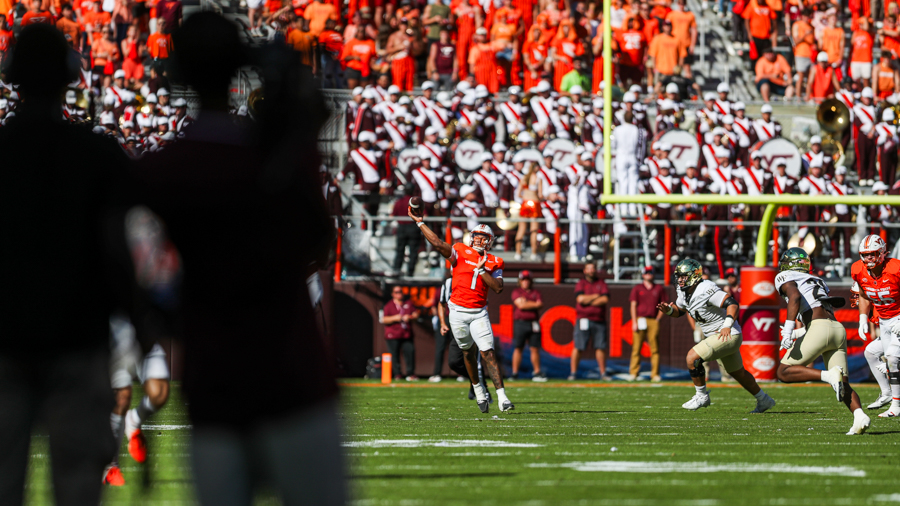Any positive momentum Virginia Tech built under interim head coach Philip Montgomery went up in smoke on Saturday afternoon. The Hokies committed a myriad of frustrating mental errors that contributed heavily to a 30-23 loss to a banged up Wake Forest team, and some of those mistakes were glaring. The Hokies got several stops on 3rd-and-long, only to commit late hit penalties. Special teams again took multiple penalties, including covering up the center on a missed field goal that allowed the Demon Deacons to rekick. Those flags directly contributed to 17 of Wake's points.
The other story was the ineffective passing attack on third downs. This isn't new. Virginia Tech has been abysmal on third down passing situations going back at least as far as the infamous 0-0 meme game against these same Deacons. Quarterback Kyron Drones certainly has mechanics and pocket presence issues that contribute to his poor play, but there are also other factors that are making it tough for him to break out. And the contributing factors — poor blitz pickup based on physical ability, setting the protection, and communication — paired with passing game structures that are not designed well for obvious passing situations, have never been addressed through four coaching administrations.
Setting the Pass Protection
Wake consistently blitzed on 3rd-and-long against the Hokies, but rarely rushed more than five defenders. The Hokies were not outnumbered, but still struggled to get a hat on a hat. In other reviews I pointed out how Virginia Tech's offensive line struggled with twist stunts all season. Against Wake, those problems were compounded by the way the Hokies set their protections.
Generally, there are two basic pass protections.
- Cup protection: the offensive line fans back and to the outside, while the running back identifies the closest unblocked threat to the quarterback.
- Slide protection: slides the blocking one gap to the right or the left, with the running back accounting for the closest unblocked hat to the backside of the protection.
The protection is usually set to the strength of the defense. This puts the onus on whomever is setting the protection to make an educated guess on where the pressure will come from based on alignment and film study. When I was in college, our center called the protection. I am not sure if Kyle Altuner sets the protection, or Drones, but consistently the protection call didn't line up to the alignment or pressures that Wake called.
Running back P.J. Prioleau (No. 20) motions to the field on 3rd-and-6, creating an empty backfield. Linebacker Dylan Hazen (No. 24) followed Prioleau, leaving five defenders in the box. There were three defenders to the left of center: linebacker Aiden Hall (No. 21), defensive tackle Dallas Afalava (No. 52), and defensive end BJ Williams (No. 18). To the right of center there were only two defenders: defensive tackle Zach Lohavichan (No. 94) and defensive end Nuer Gatkuoth (No. 7). Logic would dictate with only five defenders as immediate rush threats and more defenders are to the left of center, the protection should be set to the left.
To continue reading Get Fully Dipped and Join The Key Players Club »
- Exclusive Content
- Interact in community forums
- Post and view comments
- Advanced site features
- No pesky display ads, only offers from TKP sponsors
- Members Only Forum

